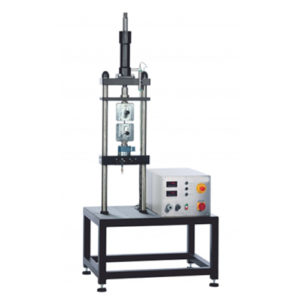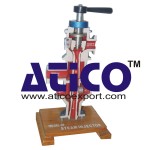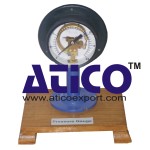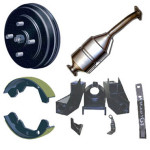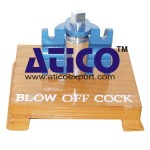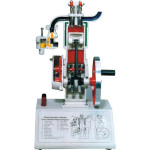A classic discipline of materials testing is the destructive testing method, in which specimens are mechanically tested to failure. The materials test provides data for hardness, rigidity and strength in a reproducible and precisely quantified manner. The unit, in conjunction with the accessories, offers experiments from destructive materials testing.
The clean layout and simple operation mean the experimental sequence can be observed in all details and phases. The power of the trainer allows tests to be performed on an industrial scale. Material specification data and laws can be verified using self-determined measured values.
Learning Objectives/Experiments
Together with the accessories
Tensile test
Compression test
Brinell hardness test
Bending test
Shear test
Cupping test
Spring testing
Features
Hydraulically operated trainer, based on industrial standards
Direct generation of tensile and compressive forces
Extensive accessories for experiments from destructive materials testing
Specification
Hydraulically operated trainer for materials testing, based on industrial standards
Generation of tensile and compressive forces
Adjustable test load and travel velocity
Generation of test load via gear pump and double-acting hydraulic cylinder
Force measurement via a strain-gauge full bridge with acoustic overload signal, max. overload 150%
Displacement measurement via linear potentiometer
LED displays for force and displacement with tare and maximum-value storage
Wide range of accessories available
Technical Data
Operating area, WxH: 300x925mm
Hydraulic generation of the test load
test load: 0…50kN
max. system pressure: 175bar
max. piston stroke: 150mm
traverse velocity: 0…425mm/min
gear pump
max. flow rate: 1cm3/revolution
power consumption: 0,55kW
Measuring ranges
force: 0…50kN
displacement: 0…150mm
230V, 50Hz, 1 phase
230V, 60Hz, 1 phase; 120V, 60Hz, 1 phase

